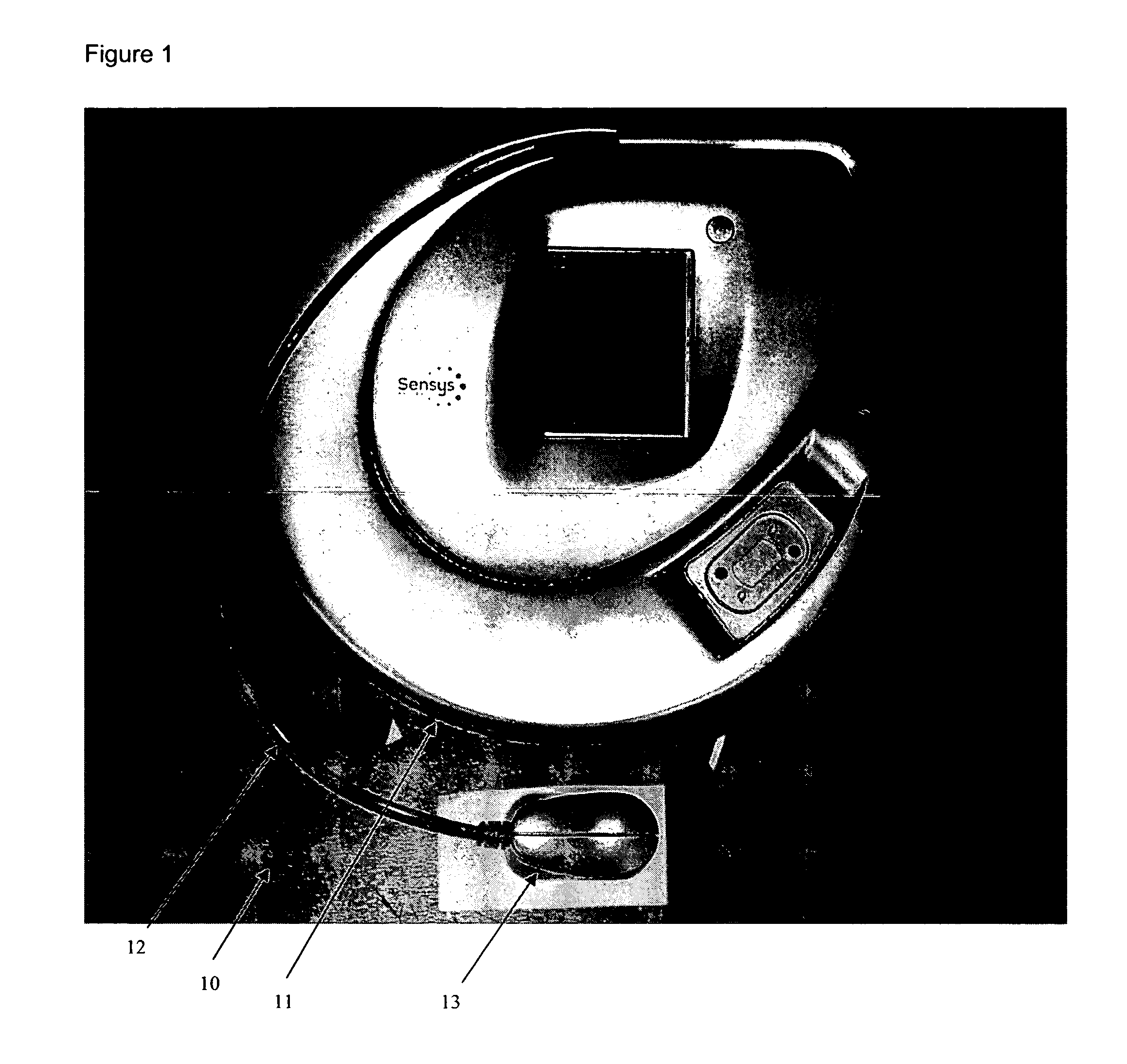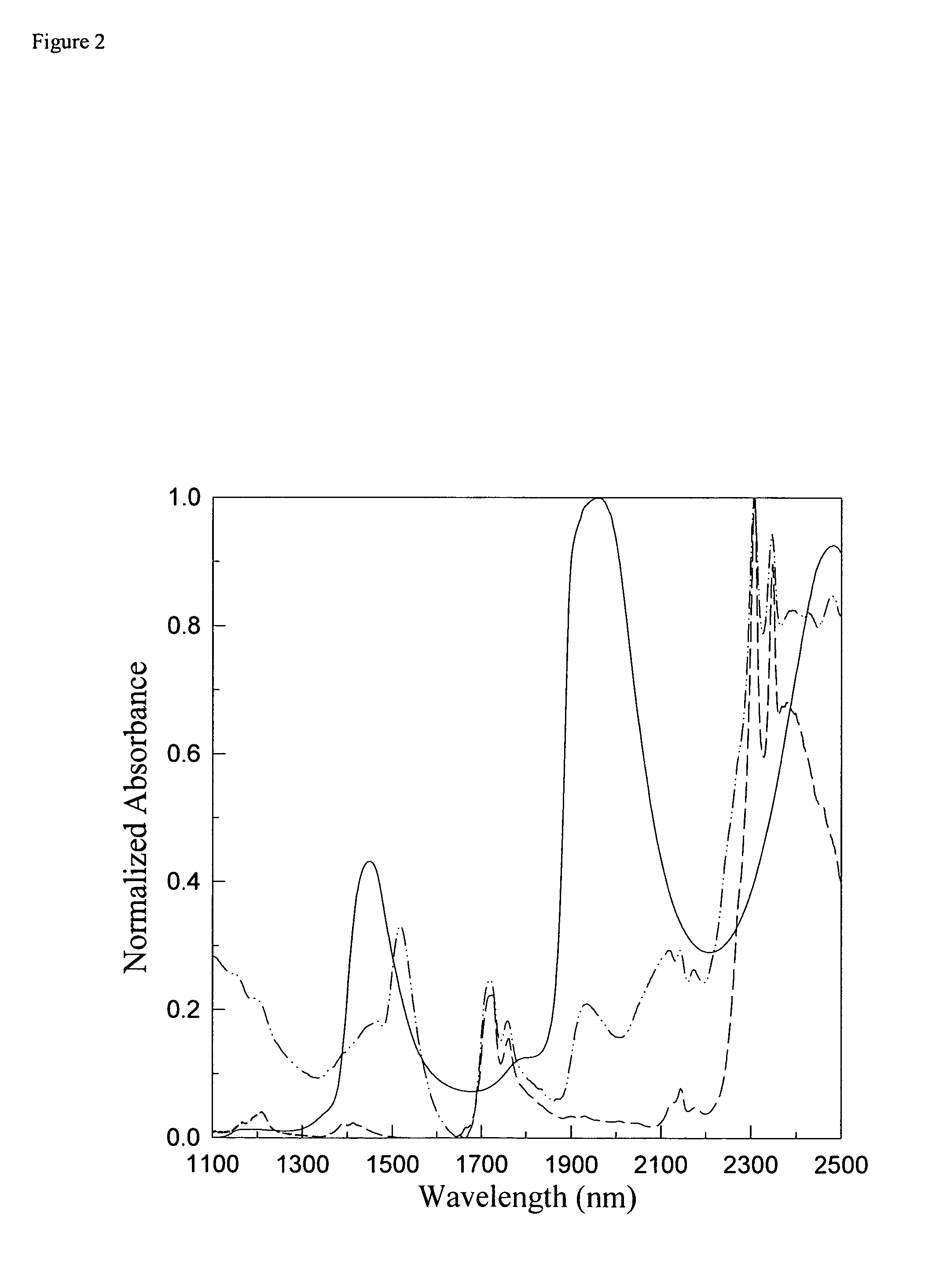Method of adapting in-vitro models to aid in noninvasive glucose determination
a glucose concentration and in-vitro model technology, applied in the field of non-invasive glucose concentration estimation, can solve the problems of current monitoring techniques that discourage regular use, diabetes is a leading cause of death and disability worldwide, and the production and use of insulin are abnormal, so as to achieve tighter control of experimental conditions and be easily controlled
- Summary
- Abstract
- Description
- Claims
- Application Information
AI Technical Summary
Benefits of technology
Problems solved by technology
Method used
Image
Examples
example 1
[0143]The remainder of this specification provides an example of an in-vitro to in-vivo calibration transfer. A subset of this example has been presented in U.S. patent application Ser. No. 10 / 241,344, which is incorporated herein in its entirety by this reference thereto and in U.S. Pat. No. 6,475,800, which is incorporated herein in its entirety by this reference thereto. This example is illustrative of the invention and is not intended to limit the invention to the species presented.
Introduction
[0144]Diffuse-reflectance near-infrared spectroscopy is used to determine physiological concentrations of glucose in a novel tissue-simulating phantom. The tissue phantom, which is preferably composed of water and a modified form of Intralipid, is similar to skin of the human forearm in terms of its absorption coefficients and scattering properties. Additional key near-infrared absorbers of skin tissue in the 1000 to 2500 nm region are embodied in the phantom by the addition of glucose, al...
PUM
| Property | Measurement | Unit |
|---|---|---|
| wavelength | aaaaa | aaaaa |
| wavelengths | aaaaa | aaaaa |
| wavelengths | aaaaa | aaaaa |
Abstract
Description
Claims
Application Information
 Login to View More
Login to View More - R&D
- Intellectual Property
- Life Sciences
- Materials
- Tech Scout
- Unparalleled Data Quality
- Higher Quality Content
- 60% Fewer Hallucinations
Browse by: Latest US Patents, China's latest patents, Technical Efficacy Thesaurus, Application Domain, Technology Topic, Popular Technical Reports.
© 2025 PatSnap. All rights reserved.Legal|Privacy policy|Modern Slavery Act Transparency Statement|Sitemap|About US| Contact US: help@patsnap.com



